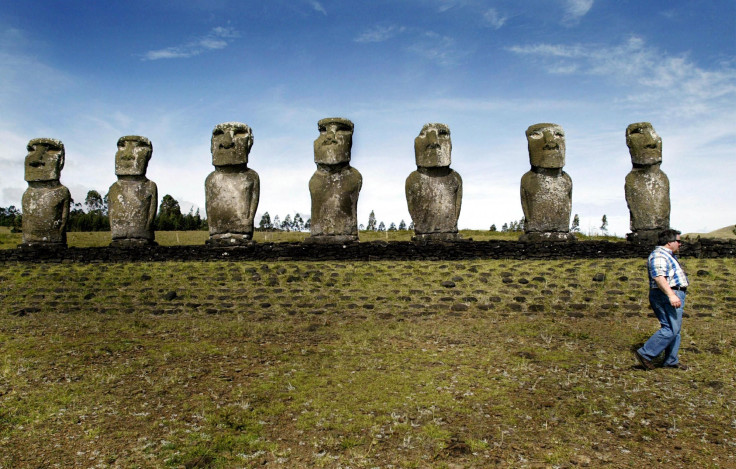Rapa Nui Population Decline: Demise Of Easter Island Society Linked To Environmental Constraints

How did the indigenous population of Polynesians, who lived on the Easter Island in the southeastern Pacific Ocean, come to an end? A new study suggests that environmental constraints are to be blamed for the eventual demise of the islanders.
The new study, published in the journal Proceedings of the National Academy of Sciences, has suggested that harsh environmental conditions -- prior to the arrival of Europeans -- on the 63-square-mile island were responsible for the society’s decline.
A previous theory had suggested that the residents of the Easter Island, also known as Rapa Nui, died after they spent all the natural resources of the small island, while some other researchers believed that the population collapsed after the Europeans arrived, The Huffington Post reported.
“The results of our research were really quite surprising to me. Indeed, in the past, we’ve published articles about how there was little evidence for pre-European-contact societal collapse,” Thegn Ladefoged, a professor of anthropology at the University of Auckland in New Zealand and the study’s co-author, said in a statement.
As part of the study, the researchers examined more than 400 obsidian artifacts found at six different sites around the island. By dating the tools and rocks, the researchers managed to determine when and how the natives of the Rapa Nui used land and natural resources all around the island. Obsidian is a hard, dark, glass-like volcanic rock formed by the rapid solidification of lava.
The first site, which is located on the northwest coast of the island, helped researchers determine that the population increased between 1220 and 1650, followed by a rapid decline thereafter. The second site showed an increase in population from 1200 to 1480, along with steady use of minerals until 1705.
The third site, which was both rainy and fertile, showed an increase in use of soil starting about 1250 and then a fairly constant use until 1850.
Because Europeans did not arrive at the Easter Island until 1722, the first two sites helped researchers determine that the Rapa Nui people were struggling against the natural limitations of the island, rather than an environmental disaster.
“It is clear that people were reacting to regional environmental variation on the island before they were devastated by the introduction of European diseases and other historic processes,” Ladefoged said.
© Copyright IBTimes 2024. All rights reserved.






















